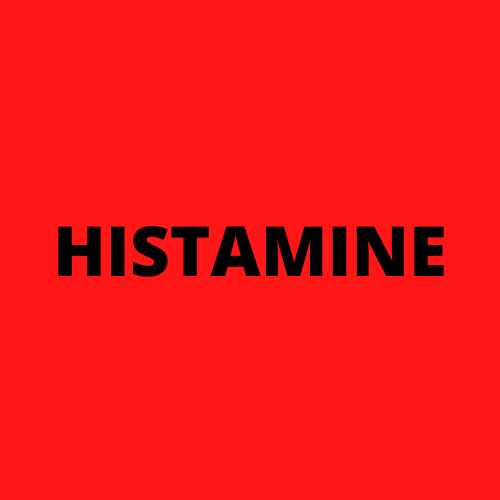
PLUM ALLERGY
Key Allergens
Plums are in the Rosaceae family of plants which also includes apples, pears, plums, cherries, apricots and peaches.
The allergen most commonly associated with plum allergy is called Pru d 3.
Pru d 3 is a Lipid Transfer Protein (LTP), these proteins are resistant to heat and are found in many types of plants. Patients suffering from a more severe allergy to cooked fruit may be sensitised to this group of proteins.
Plums also contain a Bet v 1 like protein which can cause oral allergy type symptoms, this is common with many fruits in the Rosaceae family of plants.
Plums contain a Profilin protein, which has been shown to cause allergic reactions to a lesser extent. Profilins are called panallergens because they have the potential to cause reactions over large groups of foods.
The allergen most commonly associated with plum allergy is called Pru d 3.
Pru d 3 is a Lipid Transfer Protein (LTP), these proteins are resistant to heat and are found in many types of plants. Patients suffering from a more severe allergy to cooked fruit may be sensitised to this group of proteins.
Plums also contain a Bet v 1 like protein which can cause oral allergy type symptoms, this is common with many fruits in the Rosaceae family of plants.
Plums contain a Profilin protein, which has been shown to cause allergic reactions to a lesser extent. Profilins are called panallergens because they have the potential to cause reactions over large groups of foods.
Food Intolerances



When dried plums become prunes and these can be high in histamine as the amount increases as the fruit ripens more.
Fresh plums have a moderate amount of salicylates. Canned or overripe fruit are a food high in salicylates. Salicylates have the potential to cause worsening of asthma, swelling, itching and hives as well as food intolerance symptoms in people who are sensitive to salicylates.
Plums are a high FODMAP food. FODMAP stands for Fermentable oligosaccharides, disaccharides, monosaccharides and polyols. Foods high in FODMAPs can cause symptoms of food intolerance, affecting the gastro intestinal system and this can be mistaken for a true IgE food allergy.
You can read more about Food Intolerances on the dedicated Food Intolerance Page.
Associated Syndromes
You may be suffering from LTP Syndrome if you have reactions to various fruits, vegetables and nuts and your reactions continue to be severe after you have discarded the peel and have cooked the food.
You may have Pollen Food Allergy Syndrome if you are allergic to 3 or more of the foods in the cross reactivity section below but are able to eat cooked fruit without any severe allergic reactions.
You may have Pollen Food Allergy Syndrome if you are allergic to 3 or more of the foods in the cross reactivity section below but are able to eat cooked fruit without any severe allergic reactions.
Cross Reactivity
Common foods involved in LTP allergy include kiwi, strawberries, sunflower seeds, walnut, apple, mulberry, banana, pea, apricot, cherry, plum, almond, peach pomegranate, raspberry, tomato, grape, celery, peanut, asparagus, cabbage, broccoli, chestnut, lemon, tangerine, orange, hazelnut, lettuce, lentils, lupin, green bean, pear, mustard, wheat and maize.
If sensitised to birch tree pollen you may have Pollen Food Allergy Syndrome and may also react to kiwi, pear, peach, peach, nectarine, apricots, apple, tomato, celery, carrot, potato, parsnip, pepper, dill, cumin, peas, coriander, fennel, hazelnut, walnut, almonds, peanuts, lentils and beans.
Other foods containing plant profilins are carrot, kiwi, pineapple, celery, peanut, chilli, watermelon, orange, hazelnut, melon, strawberry, soya, barley, walnut, lychee, lupin, apple, banana, date, cherry, almond, peach, pear, mustard, tomato, aubergine and wheat.
Please note that these food lists are not exhaustive, the most up to date information is on the Cross Reactivity Tool.
If sensitised to birch tree pollen you may have Pollen Food Allergy Syndrome and may also react to kiwi, pear, peach, peach, nectarine, apricots, apple, tomato, celery, carrot, potato, parsnip, pepper, dill, cumin, peas, coriander, fennel, hazelnut, walnut, almonds, peanuts, lentils and beans.
Other foods containing plant profilins are carrot, kiwi, pineapple, celery, peanut, chilli, watermelon, orange, hazelnut, melon, strawberry, soya, barley, walnut, lychee, lupin, apple, banana, date, cherry, almond, peach, pear, mustard, tomato, aubergine and wheat.
Please note that these food lists are not exhaustive, the most up to date information is on the Cross Reactivity Tool.
Resources
Websites
Science Direct - Lipid Transfer Protein
DermNet NZ - Pollen Food Allergy Syndrome
Lipid Transfer Proteins (LTP Syndrome)
Allergy to Fruit - Anaphylaxis Campaign
ATP Science - Salicylate Foods
Allergy information for: Garden plum (Prunus domestica)
Articles and Journals
Food allergy outside the eight big foods in Europe: A systematic review and meta-analysis, 2024
Food protein-induced enterocolitis syndrome in an infant triggered by prunes, 2023
Allergen Tests of Fruit Sensitization Involving Children with Allergic Diseases, 2022
Characterization of the major allergen of plum as a lipid transfer protein, 2001
Let me know if you found any of these interesting or useful.
If you spot an article or research that you think is interesting you can message me or tag me on Facebook or Twitter - links at the bottom of the page.